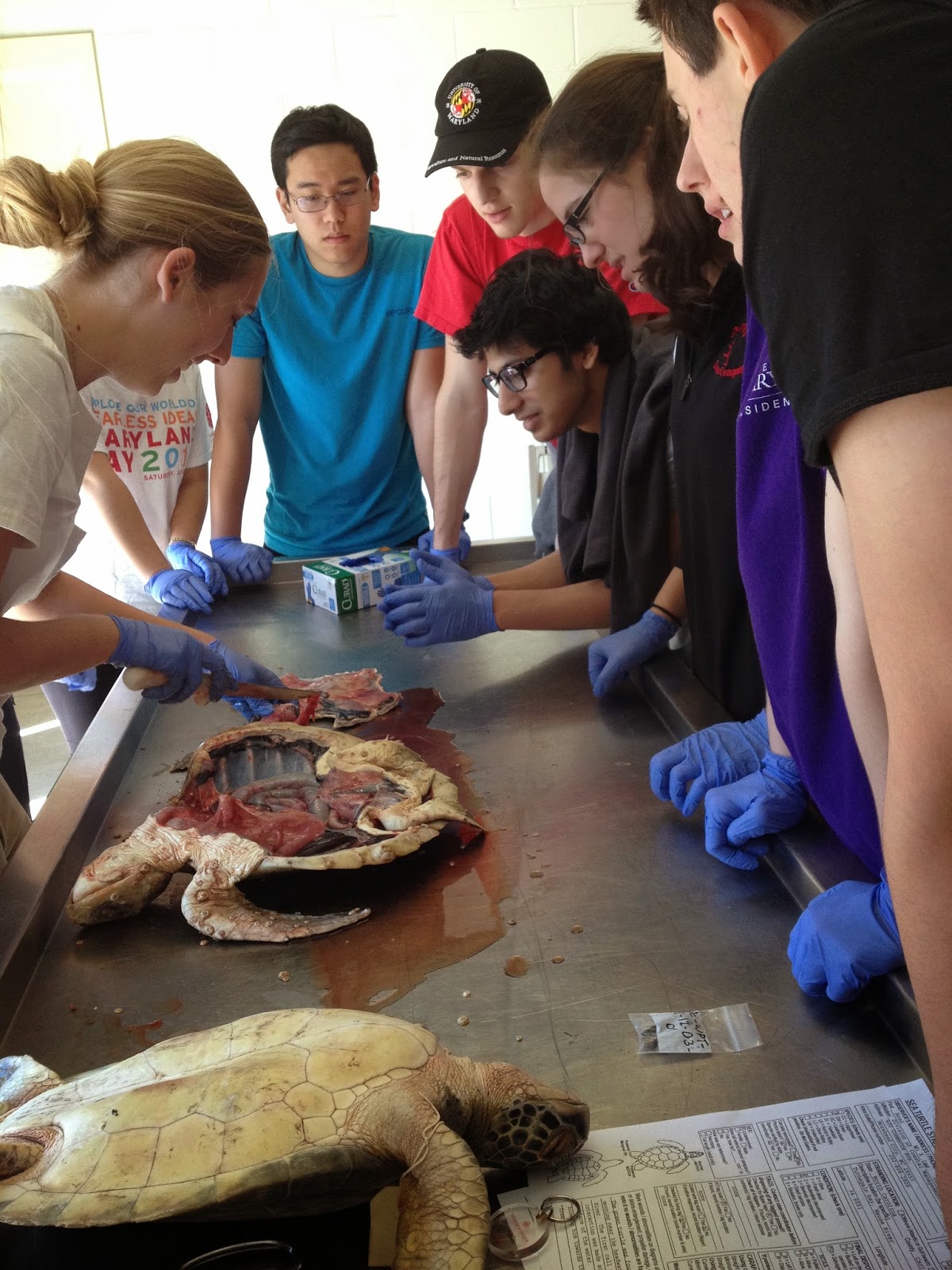 Whelp, it's our last day of our Alternative Spring Break Experience and boy what a week it was. But before we get into our final day, let's get past the whole sad that it's almost over stuff in the form of a sad turtle.
Whelp, it's our last day of our Alternative Spring Break Experience and boy what a week it was. But before we get into our final day, let's get past the whole sad that it's almost over stuff in the form of a sad turtle.Pretty sad huh?
Now that we've got that out of the way, let's get into our last day. Jean and the other volunteers were very grateful for all of the help we had given them over the week, so they gave us a special treat. During the morning shift at Sea Turtle Bay, we were able to take pictures of us feeding the sea turtles their breakfast. As you'll be able to see, each turtle gets a bowl of diced fish and squid, some of the turtles favorite foods.
 The left picture is Nicole Moy feeding some fish and squid to one of the younger Green Sea Turtles, Lewbart, who a favorite of the group. This little guy also got some lettuce and peppers after his seafood, since the Green Sea Turtle is omnivorous, something that is unique to this species of turtle. You can tell this is a Green Sea Turtle due to its green tint and its starburst scute design on its shell.
The left picture is Nicole Moy feeding some fish and squid to one of the younger Green Sea Turtles, Lewbart, who a favorite of the group. This little guy also got some lettuce and peppers after his seafood, since the Green Sea Turtle is omnivorous, something that is unique to this species of turtle. You can tell this is a Green Sea Turtle due to its green tint and its starburst scute design on its shell.The right picture is David Yim feeding a Loggerhead Sea Turtle, Gunner, which can be identified by its log-like head and its yellow and brown color.
 When the later group came in to work, they made use of the nicer weather and stayed outside to do some yard work. This consisted of pulling weeds and collecting trash. The work group also got the chance to help replace the carbon filter of the water system, which is integral to filtering the water used in the sea turtle tanks.
When the later group came in to work, they made use of the nicer weather and stayed outside to do some yard work. This consisted of pulling weeds and collecting trash. The work group also got the chance to help replace the carbon filter of the water system, which is integral to filtering the water used in the sea turtle tanks. When our work was all finished, Jean allowed us to say goodbye to our favorite turtles (*cough cough* October) as well as get some tee shirts and souvenirs at the gift shop. Here's the group photo we took with Jean right before we left the hospital.
When our work was all finished, Jean allowed us to say goodbye to our favorite turtles (*cough cough* October) as well as get some tee shirts and souvenirs at the gift shop. Here's the group photo we took with Jean right before we left the hospital.
All of our nametags in order of awesomeness
(Just Kidding)
Once we left the hospital, we geared up for a beach clean up of the shore just outside our house. With plastic collection bags and trash bingo cards in hand, we began our search. We split up into two groups and scoured the sand about a mile in each direction, throwing away plastic wrappers, cigarette butts, plastic utensils, metal scraps, and I kid you not, a piece of tire. Once we gleaned the shore and tallied up the damage, we left the beach happy to know that the beach was a little cleaner.
For those of you who are wondering, the quote on the Alternative Break Shirt says this:
"The two most important days in your life are the day you are born and the day you find out why."
- Mark Twain
After the beach clean up, we met up with Jean at a restaurant she recommended, called Daddy Macs. This place had some pretty amazing seafood such as the crabcakes, salmon, fried oysters, shrimp, and scallops. Icing on the cake? Some great stories from Jean Beasley. Icing on the icing on the cake? Hugs from Jean Beasley. Seriously we're putting that on our resumes.
<-- The arm of the majestic Moaz-arrati
After dinner, we all met together and had our *sniff* final reflection. The big question was why do we serve, and we got some pretty interesting responses. Really makes you wonder the reasoning behind the good things we do. After that, we finally got our Warm Fuzzies, little messages of kindness we wrote to each other since the beginning of the week. You can probably guess how we felt after we read them.
Now it seems that our time in Topsail, North Carolina has come to an end. But this Alternative Break Experience is far from over. UMD always tells us that we'll always be Terps, even after we graduate. So if we'll always be Terps, I guess that means we'll never stop helping Turtles either huh? Even after we all go our separate ways and resume our busy lives in College Park, we'll always remember the time we spent together. In fact, we also plan on meeting at a later date to have a post trip party, as well as additional service in Maryland. And who knows? Maybe some of us will return to Topsail as Experience Leaders, or even interns over the summer. What really matters, is that this experience changed the way we see conservation, and that will carry on for the rest of our lives.
So instead of the end, how about:
P.S. Purple Badgers, Bow-Wow, and Praise the Helix Fossil. #ILSbeachhouseyolo
















































